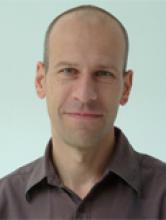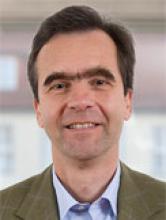- Home
- About
- Partners
- Newcastle University
- University of L'Aquila
- University of Manchester
- Alacris Teranostics GmbH
- University of Pavia
- Polygene
- Consiglio Nazionale delle Ricerche
- INSERM
- Certus Technology
- Charité Universitaet Medizin
- GATC Biotech
- University Medical Center Hamburg Eppendorf
- Evercyte GmbH
- University Hospital of Cologne
- PRIMM Srl
- University of Freiburg
- University of Antwerp
- Finovatis
- Research
- SYBIL at a glance
- Bone
- Growth plate
- Desbuquois dysplasia
- Diastrophic dysplasia
- MCDS
- Osteopetrosis
- Osteoporosis
- Osteogenesis imperfecta
- Prolidase deficiency
- PSACH and MED
- Systems biology
- SOPs
- Alcian Blue staining
- Bone measurements
- BrdU labelling
- Cell counting using ImageJ
- Chondrocyte extraction
- Cre genotyping protocol
- DMMB assay for sulphated proteoglycans
- Densitometry using ImageJ
- Double immunofluorescence
- Electron microscopy of cartilage - sample prep
- Extracting DNA for genotyping
- Grip strength measurement
- Histomorphometry on unon-decalcified bone samples
- Immunocytochemistry
- Immunofluorescence
- Immunohistochemistry
- Quantitative X-ray imaging on bones using Faxitron and ImageJ
- Skeletal preps
- TUNEL assay (Dead End Fluorimetric Kit, Promega)
- Toluidine Blue staining
- Toluidine Blue staining
- Von Kossa Gieson staining
- Wax embedding of cartilage tissue
- Contact Us
- News & Events
- Links
- Portal
Charité Universitaet Medizin
 With 13,000 employees the Charité is one of the largest university hospitals in Europe. Founded 300 years ago as a hospital for the poor it is today a clinical as well as scientific centre of excellence with international recognition. 7,000 students are educated in human medicine and related areas, 700,000 patients are treated annually, resulting in a turnover of 1.2 billion euro. Since 2010 the Charité has established the interdisciplinary Berlin Centre for Rare Diseases (BCRD), in which the Institute for Medical Genetics and Human Genetics (IMGHG) collaborates closely with other medical specialities to optimize diagnostics and care of patients with rare diseases. IMGHG is not only a central pillar of the Berlin Centre for Rare Diseases (BCRD), but is also engaged in the Berlin Brandenburg Centre for Regenerative Therapies (BCRT), which is committed to translational approaches. A branch of the institute is further located at the Max Planck Institute for Molecular Genetics, a main powerhouse for genomic research in Germany. The research focus is the genomic and pathophysiological analysis of rare connective tissue and musculoskeletal disorders. As a unique constellation the institute houses a large bioinformatic group led by Peter N. Robinson, who combines pediatric clinical expertise with computer science, the group of Uwe Kornak, a biochemist and MD specialized in pathophysiology, the team of Stefan Mundlos, which is specialized in developmental analysis and gene regulation, and finally a proteomics core unit.
With 13,000 employees the Charité is one of the largest university hospitals in Europe. Founded 300 years ago as a hospital for the poor it is today a clinical as well as scientific centre of excellence with international recognition. 7,000 students are educated in human medicine and related areas, 700,000 patients are treated annually, resulting in a turnover of 1.2 billion euro. Since 2010 the Charité has established the interdisciplinary Berlin Centre for Rare Diseases (BCRD), in which the Institute for Medical Genetics and Human Genetics (IMGHG) collaborates closely with other medical specialities to optimize diagnostics and care of patients with rare diseases. IMGHG is not only a central pillar of the Berlin Centre for Rare Diseases (BCRD), but is also engaged in the Berlin Brandenburg Centre for Regenerative Therapies (BCRT), which is committed to translational approaches. A branch of the institute is further located at the Max Planck Institute for Molecular Genetics, a main powerhouse for genomic research in Germany. The research focus is the genomic and pathophysiological analysis of rare connective tissue and musculoskeletal disorders. As a unique constellation the institute houses a large bioinformatic group led by Peter N. Robinson, who combines pediatric clinical expertise with computer science, the group of Uwe Kornak, a biochemist and MD specialized in pathophysiology, the team of Stefan Mundlos, which is specialized in developmental analysis and gene regulation, and finally a proteomics core unit.
Charité roles in SYBIL
The Charité has a strong commitment towards developing tools for interpretation of next-generation sequencing data derived from humans and different disease models.To render phenotypic data compatible with bioinformatic analysis the computational biology group around Peter Robinson plays a leading role in the development of the human phenotype ontology, which will be further extended and optimized in WP4 of this project. A common e database will be established for all OMICS data which forms the basis for the following systems biology analysis. Stefan Mundlos has a strong focus on the investigation of non-coding variants and their gene regulatory role in human disease and will lead the work on the functional analysis of such variants found in CSDs and RSDs. Progeroid disorders are valuable models for human age-related disorders like OA and OP. Uwe Kornak has identified several gene defects for progeroid syndromes with OP-like symptoms and will focus on the analysis of this group of disorders in cell and animal models.
Facilities available at Charité include an animal facility for zebrafish and rodents, access to 14 next-generation sequencers, mass spectrometry, EM facility and micro CT imaging facility.
Charité researchers involved in SYBIL
 Prof Uwe Kornak, Professor for Molecular Pathomechanisms of Genetic Diseases, research fields Molecular pathomechanisms of RDs, connective tissue and bone disorders, aging, cell biology, ion homeostasis. Cutis laxa (CL) is the hallmark of a group of hereditary disorders with progeroid appearance due to sagging and wrinkly skin associated with fragmented dermal elastic fibres, low bone mass and variable involvement of other organ systems. We recently found mutations in two proteins residing in the Golgi compartment (ATP6V0A2, GORAB) and one mitochondrial protein (PYCR1) in three overlapping forms of autosomal recessive cutis laxa (ARCL). Further functional analyses revealed that fibroblasts from individuals with all three gene defects show not only altered secretion of ECM proteins, but also increased apoptosis rates and cellular senescence. This implies a previously unrecognized functional interplay between Golgi apparatus and mitochondria in the regulation of cell fate and survival, which we characterize using different in vitro and in vivo models.
Prof Uwe Kornak, Professor for Molecular Pathomechanisms of Genetic Diseases, research fields Molecular pathomechanisms of RDs, connective tissue and bone disorders, aging, cell biology, ion homeostasis. Cutis laxa (CL) is the hallmark of a group of hereditary disorders with progeroid appearance due to sagging and wrinkly skin associated with fragmented dermal elastic fibres, low bone mass and variable involvement of other organ systems. We recently found mutations in two proteins residing in the Golgi compartment (ATP6V0A2, GORAB) and one mitochondrial protein (PYCR1) in three overlapping forms of autosomal recessive cutis laxa (ARCL). Further functional analyses revealed that fibroblasts from individuals with all three gene defects show not only altered secretion of ECM proteins, but also increased apoptosis rates and cellular senescence. This implies a previously unrecognized functional interplay between Golgi apparatus and mitochondria in the regulation of cell fate and survival, which we characterize using different in vitro and in vivo models.
 Prof Stefan Mundlos, Professor of Human Genetics, Chair of Institute for Medical Genetics and head of research group Development & Disease at the Max Planck Institute for Molecular Genetics. The focus of our research interest is on the molecular basis by which form and structure of the skeleton are regulated during vertebrate development. Our approach combines research on human genetic disorders with gene function analysis in vitro and in animal models. Recent advances in the identification of human gene mutations have provided new insights in the biology and pathology of skeletal development. The identification of new genes and their association with a distinct phenotype can give important infomation on the function of the gene. Developmetal biology on the other hand, provides us with a basic understanding and frame work of gene function during pattern formation and organogenesis. Modern techniques for the study and manipulation of gene expression provide us with the tools to study the molecular pathology of the embryo. Our goal is to combine Human Genetics and Developmental Genetics in order to understand pathology and normal gene function during development. The studies are carried out in close collaboration with the Institut für Medizinische Genetik at the Humboldt-Universität, Charité, Berlin.
Prof Stefan Mundlos, Professor of Human Genetics, Chair of Institute for Medical Genetics and head of research group Development & Disease at the Max Planck Institute for Molecular Genetics. The focus of our research interest is on the molecular basis by which form and structure of the skeleton are regulated during vertebrate development. Our approach combines research on human genetic disorders with gene function analysis in vitro and in animal models. Recent advances in the identification of human gene mutations have provided new insights in the biology and pathology of skeletal development. The identification of new genes and their association with a distinct phenotype can give important infomation on the function of the gene. Developmetal biology on the other hand, provides us with a basic understanding and frame work of gene function during pattern formation and organogenesis. Modern techniques for the study and manipulation of gene expression provide us with the tools to study the molecular pathology of the embryo. Our goal is to combine Human Genetics and Developmental Genetics in order to understand pathology and normal gene function during development. The studies are carried out in close collaboration with the Institut für Medizinische Genetik at the Humboldt-Universität, Charité, Berlin.
Prof Peter N. Robinson, Group Leader/Prof. , Research Fields: i.Computational Biology, ii.Molecular Genetics. I am a physician by training and completed my medical education at the University of Pennsylvania followed by an internship at Yale. Currently I hold a research scientist position at the Institute for Medical Genetics of the Charité Berlin. Additionally, I have obtained a BA in Mathematics and a Master of Science in Computer Science from Columbia University in New York City, and a main focus in my research has been to use mathematical and bioinformatic models to understand biology and hereditary disease. In addition to computational biology, we also do "wetlab" molecular genetics research in hereditary disease as well as in the molecular mechanisms of fracture healing.


